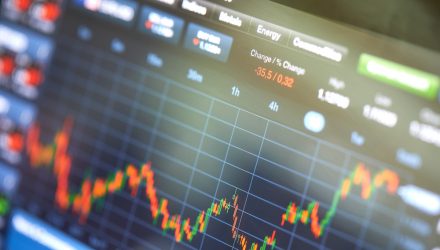Fed rate cuts and more coronavirus concerns gave the markets another wild ride in Tuesday’s trading session as the green upside was replaced by red downside to end the day. In this volatile market, low volatility exchange-traded funds (ETFs) can help smoothen the ride.
One way to combat volatility is to simply choose stocks that aren’t prone to heavy fluctuations.
“The simplest approach is to basically target stocks that have exhibited low volatility in the recent past, based on the assumption that stocks with low past volatility will likely continue to exhibit low risk going forward,” said Alex Bryan, Morningstar’s director of passive strategies in North America said in an interview. “So if you think about this, this tends to tilt toward stocks like utilities, consumer defensive names, in some cases, healthcare names. These types of stocks tend to be a little bit less cyclical than most. So, in times when the economy is not doing so well, they tend to have better earnings than the more cyclical stocks.”
A second way is to look at low volatility ETFs, such as the iShares Edge MSCI Minimum Volatility USA ETF (USMV) and Invesco S&P 500 Low Volatility ETF (SPLV). Not only do the funds help shield volatility, but they also do so at a low cost—a 0.15% expense ratio for USMV and a 0.25% expense ratio for SPLV.
SPLV seeks to track the investment results of the S&P 500 Low Volatility Index. Strictly in accordance with its guidelines and mandated procedures, the index provider selects 100 securities from the S&P 500 Index for inclusion in the underlying index that has the lowest realized volatility over the past 12 months as determined by S&P DJI.
“So, a fund in this group that I like is Invesco S&P 500 Low Volatility ETF,” said Bryan. “The ticker is SPLV. This fund effectively winds up the stocks in the S&P 500 based on their volatility over the past year and targets the least volatile 100. Now, one of the issues with this strategy is you do tend to get some very large sector concentrations from time to time. So, this fund right now has a lot of exposure to utilities and to REITS. There’s going to be times when that works out. There’s going to be times when that may not pay off. So, it’s important to keep that in mind, but overall, it’s done a really good job of cutting downside risk.”
USMV seeks the investment results of the MSCI USA Minimum Volatility (USD) Index. The index measures the performance of large and mid-capitalization equity securities listed on stock exchanges in the U.S. that, in the aggregate, have lower volatility relative to the large- and mid-cap U.S. equity
“So, a fund that I like here is the iShares Edge MSCI USA Minimum Volatility ETF,” said Bryan. “The ticker is USMV. This fund basically uses an optimizer to try to construct the least volatile portfolio possible under a set of constraints to improve diversification. This includes limiting sector tilts relative to the market. So what you end up with is a really well diversified portfolio that mitigates exposure to the sources of risk that you may not anticipate, but it also still favors those types of defensive names that you get with that Invesco fund that uses a more simplistic approach. But I do like this type of strategy as a way of really building a strong core portfolio.”
A couple of other ETFs to consider:
- iShares Edge MSCI EM Minimum Volatility UCITS ETF (BATS: EEMV)
- Invesco S&P MidCap Low Volatility ETF (NYSEArca: XMLV)
For more market trends, visit ETF Trends.

